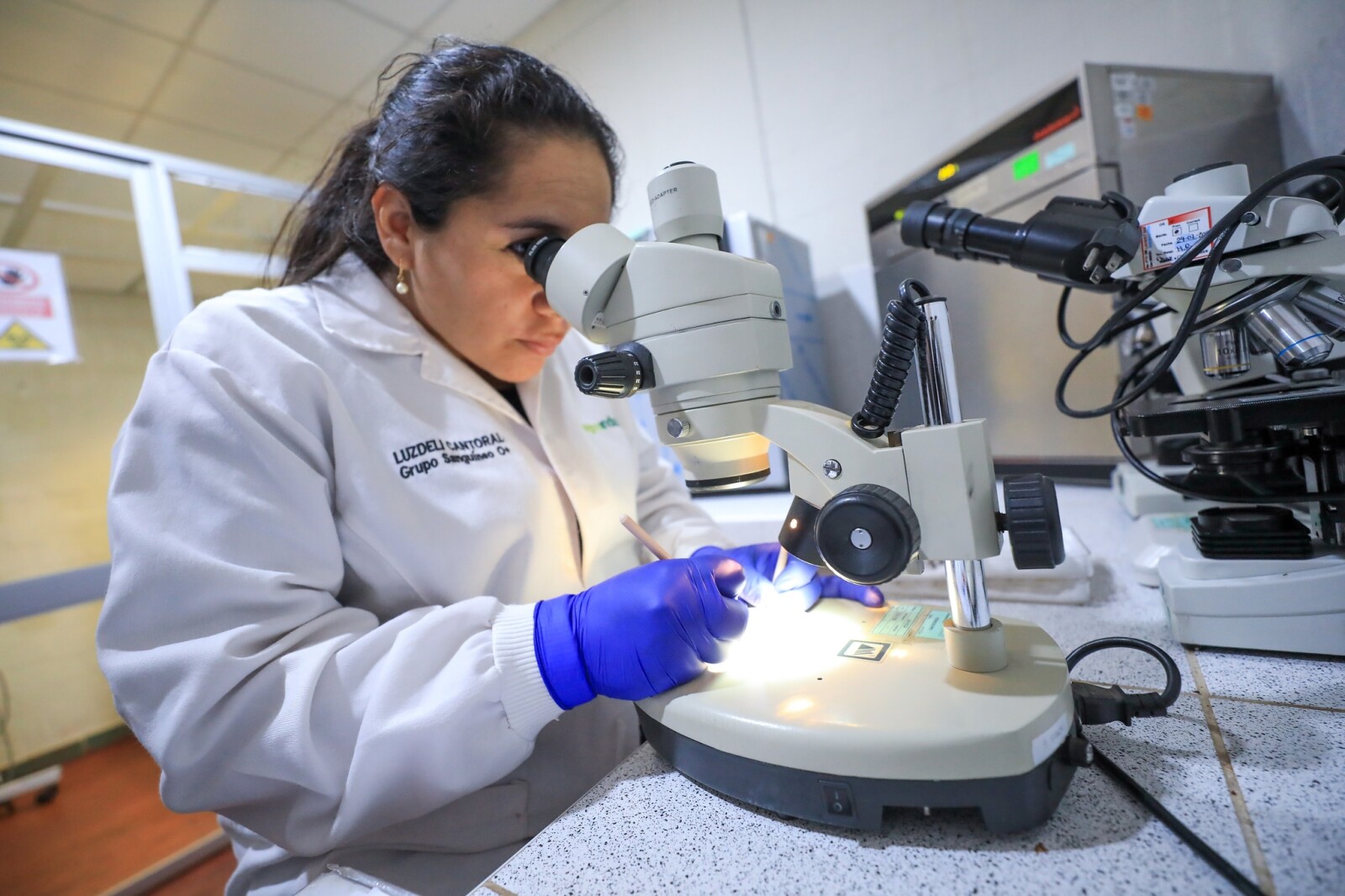New Treatment Breakthroughs for Soft Tissue Sarcoma
This article explores new treatment breakthroughs for soft tissue sarcoma, a type of cancer originating from the body's soft tissues. Covering diagnosis methods to emerging therapies, it highlights recent advancements like Nirogacestat and Atezolizumab, and their potential in treating conditions like desmoid tumors and advanced alveolar soft part sarcoma. It provides a comprehensive understanding of the latest developments, offering hope to patients, caregivers, and healthcare professionals in their fight against this disease.

Key Takeaways
- Soft tissue sarcoma can develop in various parts of the body, such as muscles, tendons, fat, and blood vessels.
- Different types of soft tissue sarcoma require specific treatment approaches.
- Research and clinical trials offer potential treatment options for soft tissue sarcoma.
- Regular check-ups and physical examinations can aid in early detection of soft tissue sarcoma.
Understanding Soft Tissue Sarcoma
While it is critical to delve into the new breakthroughs in treating soft tissue sarcoma, it is equally important to first establish a comprehensive understanding of what soft tissue sarcoma is, including its origin, common locations, and the various types that exist. Soft tissue sarcoma is a cancer that originates in the body's soft tissues such as muscles, fat, and blood vessels. It can develop in any part of the body, but commonly occurs in the arms, legs, chest, and abdomen. Various types of soft tissue sarcoma exist, each requiring specific treatment strategies. Patient support, which includes coping mechanisms and caregiver assistance, plays a crucial role in managing this condition. Finally, advancements in research and clinical trials hold promise for innovative treatment options and improved patient outcomes.
Diagnosis Methods for Soft Tissue Sarcoma
The physician's approach to diagnosing soft tissue sarcoma often involves a series of specific tests and examinations. These may include imaging tests like MRIs, CT scans, or PET scans, as well as a biopsy to confirm the diagnosis. Early detection of soft tissue sarcoma is critical, as it can significantly improve the prognosis and expand treatment options. Therefore, physicians often emphasize regular check-ups and staying alert to any unusual body changes. They also explore alternative therapies in conjunction with conventional treatment methods, to enhance patient comfort and improve overall outcomes. Genetic testing is another emerging diagnostic method, which can help identify individuals with a higher risk of developing sarcoma. The goal is to provide a comprehensive, personalized diagnosis plan for each patient.
Traditional Treatment Approaches for Soft Tissue Sarcoma
Several traditional treatment approaches for soft tissue sarcoma exist, and they often involve a combination of surgery, radiation therapy, and chemotherapy. The choice of treatment is determined by the type, location, and stage of the sarcoma, as well as the patient's overall health. Recent diagnostic advancements have improved the ability to identify the specific characteristics of the sarcoma, which has led to the development of more targeted therapies. These therapies are designed to specifically attack the cancer cells, minimizing damage to healthy tissues. This has resulted in improved patient outcomes and reduced side effects. Despite these advancements, traditional treatments remain the cornerstone of soft tissue sarcoma management, often used in conjunction with these newer targeted therapies.
Emerging Therapies for Soft Tissue Sarcoma
Pushing the boundaries of medical science, researchers are exploring and developing emerging therapies for soft tissue sarcoma that hold the potential for improved patient outcomes. These new treatments, often born out of rigorous clinical trials, aim to provide more effective and less invasive interventions for patients. The development of these therapies is also influenced by patient perspectives, ensuring that their experiences guide the pursuit of more personalized and impactful treatments. As research progresses, the exploration of alternative therapies is also gaining attention. From immunotherapy to targeted molecular therapy, these unconventional approaches are offering hope for patients, potentially reshaping the landscape of soft tissue sarcoma treatment. Undeniably, the future of treating this complex disease lies within these emerging, patient-focused therapies.
Clinical Trials and Their Impact on Soft Tissue Sarcoma Treatment
In understanding the landscape of soft tissue sarcoma treatments, it is vital to delve into the role and impact of clinical trials in driving forward innovative solutions. These trials are pivotal in the discovery and validation of novel therapeutic strategies, offering significant clinical trial benefits. They serve as a testing ground for pioneering treatments, giving researchers invaluable insights into the effectiveness and potential side effects of new drugs or treatment methods. From patient perspectives, clinical trials open up opportunities for access to cutting-edge treatments that may not be widely available yet. Concurrently, these trials contribute to the collective knowledge about soft tissue sarcoma, paving the way for improved diagnostic tools and increasingly personalized treatment approaches.
Personal Experiences: Patient Stories of New Treatments
The personal journey of a patient undergoing new treatments for soft tissue sarcoma can provide invaluable insights into the lived experience and effectiveness of these innovative therapies. Patient testimonials often underscore the transformative impact of these treatments, illuminating the tangible improvements to their quality of life. For instance, many recount a significant reduction in symptoms and enhanced physical well-being. Some patients, initially hesitant about the unknown, have shared how their resilience was bolstered by positive treatment outcomes. Additionally, a number of patients turned to alternative therapies, supplementing their primary treatment, and found them to be beneficial. Each patient's story is unique, yet together they form a rich tapestry of hope and progress in the fight against soft tissue sarcoma.
The Role of Healthcare Providers in Administering New Treatments
Healthcare providers' expertise and commitment are crucial in administering new treatments for soft tissue sarcoma, and their role extends beyond treatment application to include patient education and post-treatment care. They are instrumental in forming healthcare provider partnerships that ensure a holistic approach to patient care, leveraging their expertise to optimize treatment plans. Their work is not limited to treatment administration; they also ensure patients understand the benefits, potential side effects, and necessary lifestyle adjustments associated with new treatments. Post-treatment, they monitor patient progress, address complications, and provide guidance for recovery. Their patient education efforts are vital in equipping patients with the knowledge to participate actively in their treatment and recovery journey, thereby playing a pivotal role in improving patient outcomes.
Future Directions in Soft Tissue Sarcoma Treatment
Undoubtedly, advances in medical technology and understanding of soft tissue sarcoma are propelling us towards more precise and effective treatments, and these future directions hold great promise for improving patient outcomes. Key among these are targeted therapies, which aim to selectively attack cancer cells based on specific genetic mutations, minimizing damage to healthy tissues. Complementing this are strides in immunotherapy, harnessing the body's immune system to recognize and fight the cancer cells. These approaches, individually or in synergy, portend a new era of personalized medicine for soft tissue sarcoma. As research progresses and our knowledge deepens, we move closer to transforming these promising therapies into standard care, offering new hope for patients battling this complex disease.
Frequently Asked Questions
What Are Some Common Side Effects of the New Treatment Options for Soft Tissue Sarcoma?
Common side effects of soft tissue sarcoma treatments can include fatigue, nausea, hair loss, and skin changes. However, patient experiences vary significantly, highlighting the importance of personalized care. Adherence challenges may arise due to these side effects, making it crucial for healthcare providers to closely monitor patients and adjust treatment plans as necessary. It's essential for patients to communicate any side effects to their healthcare team to ensure optimal treatment outcomes.
Are There Any Dietary or Lifestyle Changes Recommended Alongside the New Treatment Approach for Soft Tissue Sarcoma?
While there's no specific diet for soft tissue sarcoma, maintaining good nutrition during treatment is important. A balanced diet can help manage side effects, improve strength and speed recovery. Supplemental nutrition may be recommended depending on individual needs. Exercise can also have a positive impact on well-being, reducing symptoms like fatigue. It's essential that any dietary changes or exercise plans are discussed with the healthcare team to ensure they complement the treatment regimen.
How Do the New Treatment Options for Soft Tissue Sarcoma Compare in Cost to Traditional Treatments?
A cost-effectiveness analysis of new treatment options for soft tissue sarcoma is essential to compare them to traditional treatments. The expenses may vary due to factors like drug development costs and treatment duration. However, patients may find financial assistance programs beneficial in managing these costs. These programs can potentially help to mitigate the financial burden and make cutting-edge treatments accessible to a wider patient population. Understanding these costs is crucial for informed decision-making in treatment selection.
What Is the Success Rate of These New Treatment Breakthroughs for Soft Tissue Sarcoma?
The success rate of treatments for soft tissue sarcoma is typically measured in survival statistics. While these data vary depending on factors such as the sarcoma's type and stage, recent breakthroughs have shown promising results. However, it's vital to note that treatment accessibility can greatly influence these statistics, as not all patients may have access to these new advancements. Detailed, patient-specific survival rates should be discussed with the individual's healthcare provider.
Are These New Treatments for Soft Tissue Sarcoma Covered by Insurance?
Insurance coverage for treatments of soft tissue sarcoma varies depending on the insurance provider and the specific treatment. Insurance loopholes may present challenges in securing coverage. It's crucial to consult with your insurance company to understand the extent of your coverage and treatment accessibility. Some insurance companies may cover new treatments if they are approved by regulatory bodies. However, experimental treatments or those in clinical trials may not be covered. Each situation is unique and requires individual investigation.
Conclusion
In conclusion, advancements in soft tissue sarcoma treatment, particularly the introduction of drug combinations like Nirogacestat and Atezolizumab, offer promising prospects. Clinical trials conducted by the National Cancer Institute substantiate their potential efficacy in treating conditions like desmoid tumors and advanced alveolar soft part sarcoma. Continued research, coupled with the pivotal role of healthcare providers, is essential in improving patient outcomes and advancing treatment protocols for soft tissue sarcoma.

This post has been generated by AI and was not reviewed by editors. This is Not legal advice. Please consult with an attorney.




